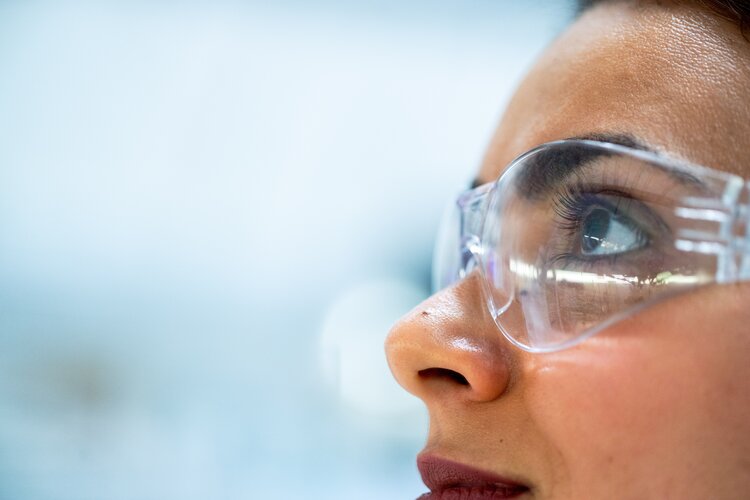Efforts to find ET gains momentum with new technique that detects microbial movement
Tuesday, 11 February 2025 12:17 The search for life beyond Earth is among the most ambitious scientific quests. One promising method is to locate motile microorganisms, capable of self-propelled movement, which serves as a strong biological indicator. If such movement is driven by a specific chemical, it is referred to as chemotaxis.
A team of German researchers has now introduced a new and simplified technique to stimul
The search for life beyond Earth is among the most ambitious scientific quests. One promising method is to locate motile microorganisms, capable of self-propelled movement, which serves as a strong biological indicator. If such movement is driven by a specific chemical, it is referred to as chemotaxis.
A team of German researchers has now introduced a new and simplified technique to stimul Wobbling Stars Lead to Discovery of Hidden Celestial Bodies in Gaia Data
Tuesday, 11 February 2025 12:17 Researchers using data from the European Space Agency's Gaia mission have identified an enormous exoplanet and a brown dwarf, marking a first in planetary discovery via Gaia's ability to detect stellar wobbles caused by gravitational interactions. These objects, found orbiting low-mass stars, present an unusual scenario that challenges established theories of planetary formation.
A new stu
Researchers using data from the European Space Agency's Gaia mission have identified an enormous exoplanet and a brown dwarf, marking a first in planetary discovery via Gaia's ability to detect stellar wobbles caused by gravitational interactions. These objects, found orbiting low-mass stars, present an unusual scenario that challenges established theories of planetary formation.
A new stu Dust Uncovers Magnetic Fields in Young Star Systems
Tuesday, 11 February 2025 12:17 For the first time, astronomers have successfully detected and analyzed the magnetic field surrounding a young star in a region where planetary formation is believed to be underway. By using dust as a tracer, researchers have mapped out the three-dimensional structure of the magnetic field, shedding new light on the processes that shape planetary systems.
Planets emerge within swirling clo
For the first time, astronomers have successfully detected and analyzed the magnetic field surrounding a young star in a region where planetary formation is believed to be underway. By using dust as a tracer, researchers have mapped out the three-dimensional structure of the magnetic field, shedding new light on the processes that shape planetary systems.
Planets emerge within swirling clo Galileo ground stations undergo systemwide migration
Tuesday, 11 February 2025 12:17 In a significant technological milestone, ESA has commenced the large-scale migration of Galileo's Control Centres, a complex endeavor that engaged over 200 experts from ESA, industry partners, and the EU Agency for the Space Programme (EUSPA). This marks the start of a comprehensive modernization effort aimed at upgrading Galileo's Ground Segment, a globally dispersed network of operational sit
In a significant technological milestone, ESA has commenced the large-scale migration of Galileo's Control Centres, a complex endeavor that engaged over 200 experts from ESA, industry partners, and the EU Agency for the Space Programme (EUSPA). This marks the start of a comprehensive modernization effort aimed at upgrading Galileo's Ground Segment, a globally dispersed network of operational sit Sliding into novel materials: A new frontier in material science
Tuesday, 11 February 2025 12:17 Can copper be turned into gold? While ancient alchemists pursued this elusive goal, modern science knows such a transformation requires nuclear reactions. However, some materials, like graphite and diamond, share the same atomic composition-pure carbon-yet differ vastly due to atomic arrangement. While converting graphite into diamond demands extreme heat and pressure, a more practical material
Can copper be turned into gold? While ancient alchemists pursued this elusive goal, modern science knows such a transformation requires nuclear reactions. However, some materials, like graphite and diamond, share the same atomic composition-pure carbon-yet differ vastly due to atomic arrangement. While converting graphite into diamond demands extreme heat and pressure, a more practical material Spinning Neutron Star Generates Immense Magnetic Fields
Tuesday, 11 February 2025 12:17 An international team of scientists has successfully modeled the formation and evolution of some of the most powerful magnetic fields in the Universe. Led by researchers from Newcastle University, the University of Leeds, and institutions in France, the study was recently published in Nature Astronomy.
The findings reveal that the Tayler-Spruit dynamo, activated by fallback material from s
An international team of scientists has successfully modeled the formation and evolution of some of the most powerful magnetic fields in the Universe. Led by researchers from Newcastle University, the University of Leeds, and institutions in France, the study was recently published in Nature Astronomy.
The findings reveal that the Tayler-Spruit dynamo, activated by fallback material from s Forest mission on show
Tuesday, 11 February 2025 08:27
After years of meticulous development, ESA’s next Earth Explorer satellite, Biomass, is ready to be packed up for transport to Europe’s Spaceport in French Guiana, where it will launch aboard a Vega-C rocket this spring.
Before final preparations and shipment, media representatives had the exclusive opportunity today to see the satellite up close in the cleanroom at Airbus’ facilities in Toulouse, France.
Celebrating Solar Orbiter and the women behind the mission
Tuesday, 11 February 2025 08:00 Image:
Celebrating Solar Orbiter and the women behind the mission
Image:
Celebrating Solar Orbiter and the women behind the mission ESA celebrates International Day of Women and Girls in Science 2025
Tuesday, 11 February 2025 08:00
Today we mark the International Day of Women and Girls in Science. Join us in a journey around Europe with EIROforum organisations to discover the brilliant talents who are shaping the future of science and technology, and dive deeper into the story of a European Space Agency young professional making her way in space.
Euclid discovers a stunning Einstein ring
Monday, 10 February 2025 07:00
Euclid, the European Space Agency’s dark Universe detective, has made an astonishing discovery – right in our cosmic backyard.
Rocket Lab launches 5th satellite batch for Kineis IoT constellation
Sunday, 09 February 2025 09:55 Rocket Lab USA, Inc. (Nasdaq: RKLB), a global leader in launch services and space systems, achieved a significant milestone today with the successful deployment of five satellites for French Internet-of-Things (IoT) operator Kineis. This marks Rocket Lab's 59th Electron mission.
The mission, designated "IOT 4 You and Me," launched from Rocket Lab Launch Complex 1 in Mahia, New Zealand at 9
Rocket Lab USA, Inc. (Nasdaq: RKLB), a global leader in launch services and space systems, achieved a significant milestone today with the successful deployment of five satellites for French Internet-of-Things (IoT) operator Kineis. This marks Rocket Lab's 59th Electron mission.
The mission, designated "IOT 4 You and Me," launched from Rocket Lab Launch Complex 1 in Mahia, New Zealand at 9 Lunar rocks help scientists pinpoint when the moon crystallized
Sunday, 09 February 2025 09:55 scientists study samples from Apollo missions, reveal new details about lunar history
Even though humans have pondered the moon since the first of us looked skyward, there is still much we still don't know about it.
One of these unsolved questions is its origin story. We think the moon formed after a colossal collision between Earth and another huge object created two balls of molten magm
scientists study samples from Apollo missions, reveal new details about lunar history
Even though humans have pondered the moon since the first of us looked skyward, there is still much we still don't know about it.
One of these unsolved questions is its origin story. We think the moon formed after a colossal collision between Earth and another huge object created two balls of molten magm Efforts to Detect Alien Life Advanced by Simple Microbe Mobility Test
Sunday, 09 February 2025 09:55 The search for extraterrestrial life remains one of humanity's most ambitious scientific pursuits. A promising approach to identifying life is through detecting motile microorganisms, which demonstrate independent movement-a strong indicator of biological activity. When such movement is triggered by a chemical stimulus, it is termed chemotaxis.
A team of German researchers has now develope
The search for extraterrestrial life remains one of humanity's most ambitious scientific pursuits. A promising approach to identifying life is through detecting motile microorganisms, which demonstrate independent movement-a strong indicator of biological activity. When such movement is triggered by a chemical stimulus, it is termed chemotaxis.
A team of German researchers has now develope New method employs atomic clocks and lasers to probe dark matter
Sunday, 09 February 2025 09:55 A team of international researchers has introduced an innovative approach to detecting dark matter, leveraging atomic clocks and ultra-stable lasers to investigate the enigmatic substance believed to hold galaxies together.
University of Queensland PhD student Ashlee Caddell co-led the study in collaboration with Germany's Physikalisch-Technische Bundesanstalt (PTB), using high-precision a
A team of international researchers has introduced an innovative approach to detecting dark matter, leveraging atomic clocks and ultra-stable lasers to investigate the enigmatic substance believed to hold galaxies together.
University of Queensland PhD student Ashlee Caddell co-led the study in collaboration with Germany's Physikalisch-Technische Bundesanstalt (PTB), using high-precision a 

 Image:
A lab with a view
Image:
A lab with a view